USPCAS-E: The Power of Collaboration Realized
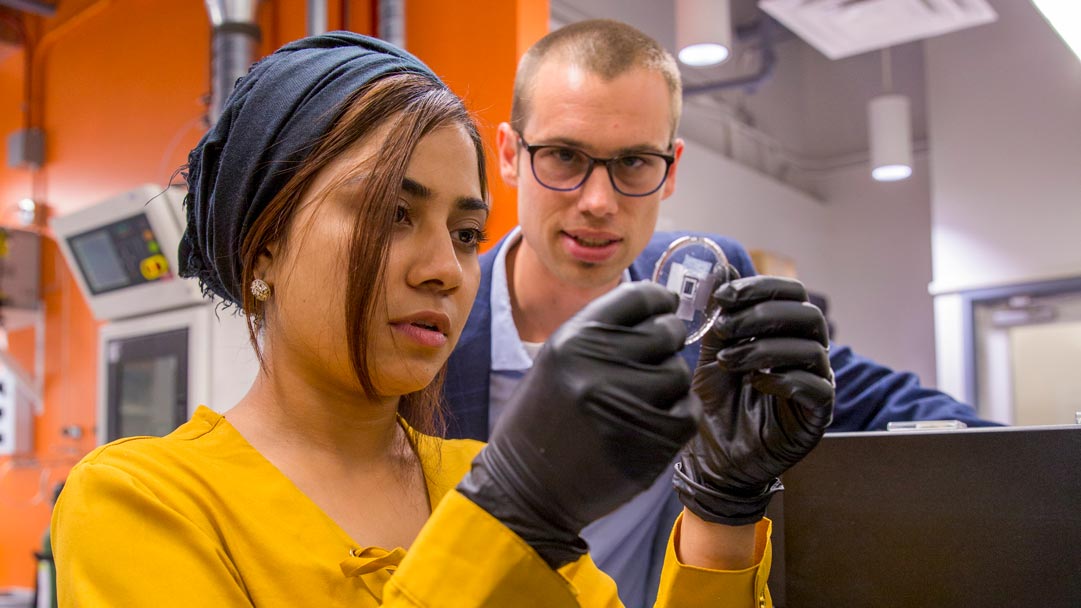
As we close out the USAID-funded portion of the project, we reflect on the project’s many successes.
Pakistan is a land of burgeoning growth and tremendous opportunity. It’s a country with the seventh-highest population in the world — over 217 million people — and the world’s seventh-largest city, Karachi, which is home to more than 11 million people.[1]
But here’s another set of numbers to consider. Sixty-one percent of the country’s residents live outside bustling urban zones in rural areas with limited access to conventional sources of energy.[2] And each day, thousands of Pakistanis — urbanites and country dwellers alike — are without power for 6 to 12 hours, the victims of rolling blackouts that sweep the country regularly due to a fragile electricity grid that cannot keep pace with ever-increasing demand.
This untenable situation has far-reaching impact. Not only is the citizenry’s quality of life impacted, but the nation’s ability to grow its economy and attract foreign investment is also hindered. Enter the U.S.-Pakistan Centers for Advanced Studies in Energy (USPCAS-E), a project created to change this dynamic.
Launched in 2015 with an $18 million investment from USAID, the USPCAS-E project was conceived as a five-year partnership between Arizona State University (ASU) and two leading Pakistani universities — the National University of Sciences and Technology (NUST) and the University of Engineering and Technology Peshawar (UET Peshawar) — together with supporting partner Oregon State University (OSU). Its charge: develop innovative solutions to Pakistan’s energy challenges through a host of initiatives, from modernizing curriculum and infrastructure within NUST and UET Peshawar to facilitating enhanced learning opportunities for faculty and students through academic exchange programs and joint research projects at ASU and OSU. Additionally, the project sought to foster partnerships between public and private energy stakeholders in Pakistan, thereby ensuring that the initiative would continue to yield results long after its conclusion in 2019. As the project nears completion, parties on both sides of the equation are evaluating the effort. All are heartened by what they see.
A story of connections made
The story of USPCAS-E is one of connections — to new sources of energy certainly, but more importantly to people. The origins of USPCAS-E stretch back to 2010, says NUST Deputy Director Ahmad Saeed, when representatives from Pakistan’s Higher Education Commission and USAID first began discussing an energy-related education initiative. “Prior to this project, USAID’s focus was mainly on primary education,” says Saeed, “but in this instance they decided to focus on higher education.” USAID officials earmarked funding to develop four centers in Pakistan: one focused on water, one on food security and two on energy (one at NUST and one at UET Peshawar).
Over the next four years, risk assessments were done, RFPs were developed and proposals were submitted. In 2014, USAID organized a conference in Washington at which Pakistani officials met with representatives from approximately 50 American universities to discuss potential projects. A competitive bidding process was held, and ASU was ultimately chosen as the institution to partner with NUST and UET Peshawar in creating new centers for energy education in Pakistan. The project launched in 2015.
In the intervening five years, dedicated individuals in the U.S. and in Pakistan have worked tirelessly to establish two centers of learning capable of making significant, long-term contributions to solving Pakistan’s energy challenges. The results of their efforts are nothing short of astounding. “In just five years, we have established two credible institutions for energy education in Pakistan, with healthy intakes of students, competent faculty and state-of-the-art facilities,” observes Saeed. “I believe this is particularly impressive because when we started, NUST’s Center of Energy Systems had no building, only rudimentary labs and a single master’s program in Energy Systems Engineering, and UET Peshawar had nothing.”
Curriculum development was a major component in the undertaking and was done a bit differently than is usual in Pakistan, Saeed says. A needs assessment was done to determine which programs should be started at the two universities and courses were chosen based on the country’s needs. Then faculty from ASU, NUST and UET Peshawar worked jointly to develop the curriculum, with help from Drs. Kendra Sharp and Brian Fronk, professors of mechanical engineering at Oregon State University who provided valuable input on course content and textbooks. “We had a continuous process of review,” says Saeed. “ASU faculty reviewed the curriculum midway through the project, then again in late 2018/early 2019. It was a comprehensive process.”
From the outset, Saeed says, ASU faculty also engaged Pakistani energy stakeholders in the process. “They reached out to the Who’s Who in our country’s energy sector and held periodic stakeholder meetings — six since early 2016 — to ensure that stakeholders here were engaged in everything from developing curriculum to formulating research ideas and internship opportunities.”
Faculty from NUST and UET Peshawar were encouraged to interact with stakeholders as well, querying them to ascertain how the centers could help in solving real-world problems through applied research projects. “These relationships are important because they will help the centers continue to move forward after the project ends,” says Saeed. “By working closely with stakeholders, we can identify research projects, cultivate funding sources for the centers and help our graduates find work.”
A series of goals surpassed
Initial results show the project is working just as the partners had hoped, notes Saeed proudly. Approximately 70 percent of NUST’s graduates are employed (although Saeed is uncertain whether all are working in the energy sector) and the remaining 30 percent are either pursuing Ph.D.s or exploring other opportunities. “It rarely happens that projects such as these achieve their stated goals, but with the USPCAS-E program, NUST and ASU not only achieved their goals, they overshot them,” he says. For example, Saeed notes, NUST was charged with awarding 250 merit-based scholarships but gave over 300. NUST was challenged to start three new programs but launched seven, and when asked to identify 100 students to participate in the exchange program, NUST tapped 110.
ASU’s dedication to the project was equally important to the project’s success, Saeed asserts. “The level of commitment and attention to detail that ASU’s faculty and administration brought to the project was key. From the outset, their commitment was not just to do something, but to do it great.”
The support provided by USAID throughout the five-year project was crucial as well, Saeed says. “It was a complex project and it wasn’t always easy, but anytime there was a problem, USAID staff helped with conflict resolution. Their oversight and support throughout the project were exceptional.”
Dr. Sayfe Kiaei — the Motorola Chair in Analog and RF Integrated Circuits; a professor in the School of Electrical, Computer and Energy Engineering, one of the Ira A. Fulton Schools of Engineering at ASU; and the USPCAS-E Project Director at ASU — is also pleased with the program’s accomplishments. “Within five years, we have developed 13 new master’s and Ph.D. programs and more than 150 new courses; graduated almost 200 master’s students, nearly one-third of whom were females or underrepresented minorities; and enrolled nearly 1,000 students in degree programs at NUST and UET Peshawar,” he observes. “Now, people in Pakistan can see that there are centers within their own country that can help them address their energy issues by educating students, conducting research, formulating policies and developing renewable energy sources for remote locations.”
These impressive gains were realized in part due to ASU’s expertise in energy systems, policy and engineering, Kiaei avers. “The technical expertise and research capabilities available through ASU’s multidisciplinary energy centers — including QESST, the NSF Engineering Research Center for Quantum Energy and Sustainable Solar Technologies, and PSERC, The Power Systems Engineering Research Center — made us ideally suited to help Pakistan in confronting its energy challenges and planning for the future.”
Faculty from ASU’s Center for Energy and Society also brought their expertise to bear on issues of energy policy and governance, Kiaei continues. “Here at ASU, we’re working to transform energy systems by tackling issues from research and regulation to strategy, entrepreneurship, policy and pedagogy,” he says, “and through the USPCAS-E project, we were able to share that knowledge with our partners in Pakistan.”
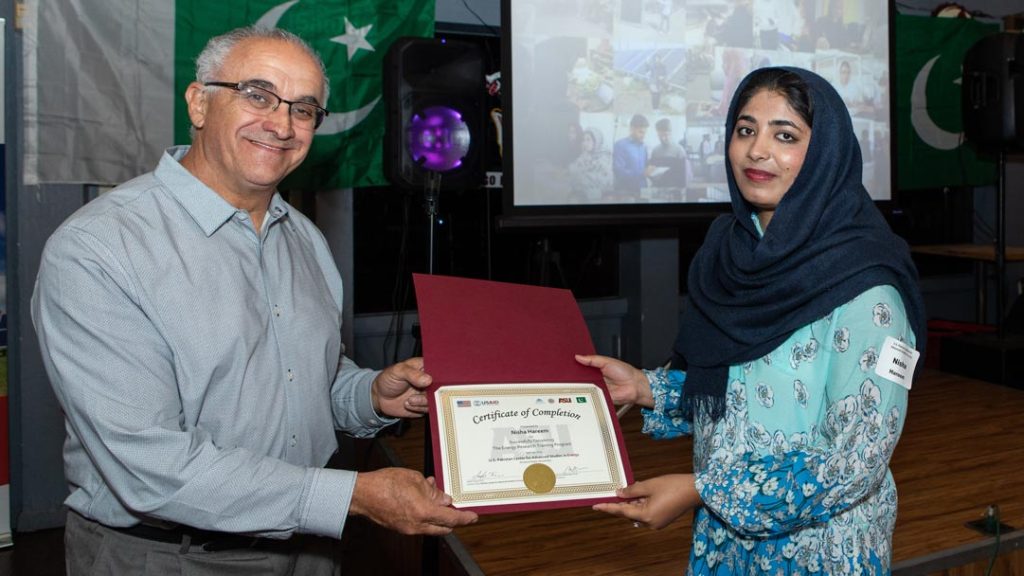
An experience of learning shared
Among the ASU faculty who shared their knowledge and experience was Zachary Holman, an Associate Professor in the School of Electrical, Computer and Energy Engineering. Holman traveled to Pakistan to lead technical training workshops for faculty, staff and stakeholders and hosted exchange scholars in his ASU laboratory.
“I was perhaps most surprised by what my Pakistani exchange students found valuable,” says Holman. “It turns out that the hands-on learning component of working in my lab was critical. To be trusted to use extremely expensive equipment on their own, anytime, was incredibly important to the students, and quite different from their experiences in Pakistan,” he explains. “Once I realized that, I made sure that each exchange student was trained on at least three pieces of equipment.”
Empowering the exchange students with intellectual responsibility was another important step, says Holman. In Pakistan, faculty typically remain more distant from students, dispensing wisdom in a one-way relationship, whereas at ASU, faculty and graduate students interacted with the Pakistani exchange students on a first-name basis and expected them to carry their weight on research projects. “This level of responsibility was new to them and transformative,” says Holman. “Many left with a new attitude: ‘I can do more than I realized, I just need to be trusted and trust myself.’” And these realizations continue to pay dividends after the students return to Pakistan, asserts Holman. “Through this project, NUST and UET Peshawar are now nurturing a group of young, up-and-coming energy experts who have seen how things can be done and who have learned new ways to operate in an academic environment.”
Holman and members of his lab benefited as well. The professor gained a new doctoral student — after spending a semester in Holman’s lab, Warda Mushtaq elected to return to ASU to pursue her Ph.D. — and Holman’s graduate students and post-docs learned more about themselves. “Several of my students served as mentors to our exchange students, which was enlightening for them. Some realized they liked teaching, while others discovered it wasn’t their calling. In both cases, researchers in my lab got a better sense of what they’d like to do in their own careers.”
In short, says Holman, the USPCAS-E project was tremendously valuable to everyone involved. And none of it would have been possible without USAID, he continues. “I’m very grateful for their support. The research relationships that have been formed will persist long after the project is completed.”
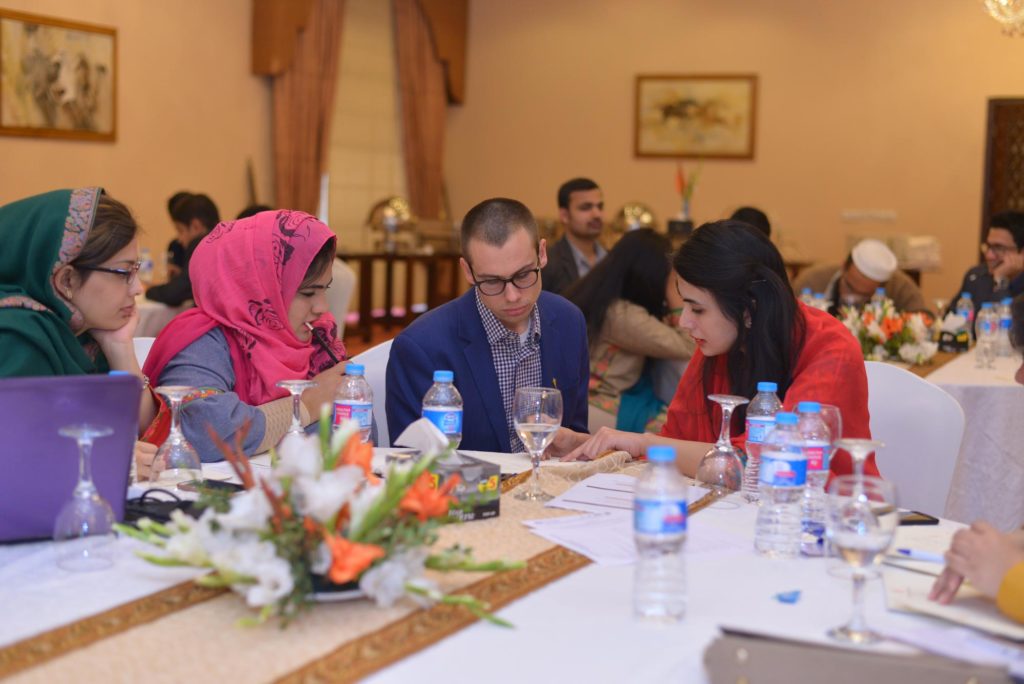
A path forward set
“Research is an ongoing effort that links faculty on both ends of the project,” agrees ASU Professor A.M. Kannan, the research component lead and joint research project principal investigator for the initiative. “Sustainability was a major component of this initiative, so we wanted to ensure that we helped NUST and UET Peshawar faculty master the elements of a successful research program.”
For example, says Kannan, when the project started, Pakistani faculty wanted training in writing a successful research proposal, so ASU held a proposal writing workshop at NUST. ASU also assessed the universities’ research facilities and made recommendations as to the equipment they should procure. And when exchange students came to work in ASU’s labs, faculty members guided them in proper protocols. These initiatives were so productive, Kannan notes, that faculty at ASU, NUST and UET Peshawar are now developing a “1+1” dual-degree master’s program that will allow Pakistani students to earn a degree by taking one year of courses in Pakistan and conducting one year of research at ASU.
Strengthening the ability of Pakistan’s universities to conduct applied research is valuable to all parties, Kannan continues. “For example, working together on an issue like thermal energy storage is exciting — it’s research that’s non-existent in Pakistan and a very small field in the U.S., so new opportunities exist for everyone.” LEED-certified buildings are another area of interest. “Now that we’ve built a couple of these structures at NUST and UET Peshawar, we can explore ways to promote the concept in Pakistan’s major cities,” he says.
New skills in conducting applied research weren’t the only takeaways for Pakistani students and faculty who traveled to the U.S. as part of the exchange scholar program, notes NUST Deputy Director Saeed. Participants also experienced a significant change in expectations and attitudes toward their education. “Our students returned with a sense of confidence and a determination to pursue research more aggressively,” he observes.
For example, Saeed says, while in the States, Pakistani students were allowed 24/7 access to research laboratories and were trusted to use expensive equipment on their own. At NUST, conversely, they had only been allowed lab access from 9 a.m. to 5 p.m. and were restricted from using equipment unsupervised. “When they got back, they demanded we change our policies, which we did,” he observes. Students also returned home with improved research methodologies. “For instance,” he says, “plagiarism is a serious offense in the U.S. and by working with researchers from ASU and OSU, our students learned how to quote research properly.”
Pakistani exchange scholar Maria Kanwal puts it more bluntly. “Spending a semester working in the lab of Professor Zachary Holman was life-changing,” she asserts. “The experience was great for both my resume and my abilities. Working with Ph.D. students and post-docs in Professor Holman’s lab, I learned how research is conducted in a focused environment, helping me become immersed in my work and improving my ability to approach problems in the lab.”
Kanwal carried her newfound knowledge back to Pakistan, where she completed her master’s and began working in a solar energy firm. But the changes didn’t stop there; Kanwal permanently altered her plans for the future. She has applied for a scholarship and hopes to begin working on her Ph.D. in a U.S. or European graduate program in September 2020. After completing her doctorate, she plans to return to Pakistan to implement what she has learned. “My degree won’t just be hanging on my wall,” she insists.
Allowing university students from Pakistan the chance to conduct energy research in the U.S. is invaluable, Kanwal asserts. “Energy is something we need to focus on in Pakistan and the USPCAS-E program has really helped to advance knowledge and research in the field here. I hope the U.S. government knows how much we appreciate its contributions. I am very grateful!”
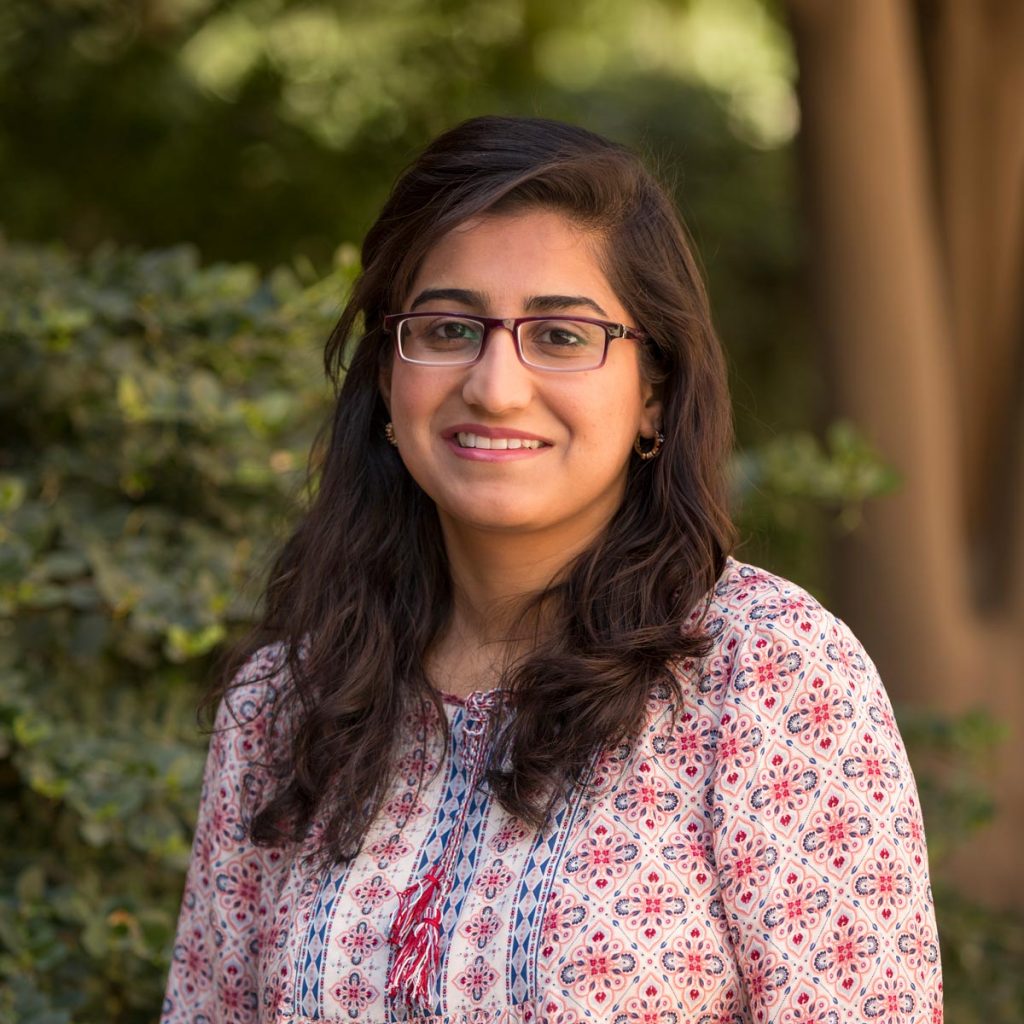
ASU graduate student Warda Mushtaq is similarly enthusiastic. She, too, spent a semester in the states as an exchange scholar in Professor Holman’s lab and has now returned to complete a Ph.D. in electrical engineering with a specialization in optoelectronics under his tutelage. “The research exposure I gained through the USPCAS-E program was very important to my development as a researcher,” says Mushtaq. “The main challenge I faced during my research work in Pakistan was limited availability of resources —I wasn’t even sure I wanted to participate in the exchange program when the opportunity arose — but my experience with the faculty, equipment and lab facilities at ASU helped me to focus and determine next steps.” After completing her doctorate, Mushtaq plans to return to Pakistan and pursue a faculty position at NUST.
Faculty members in Pakistan have also benefited from the exchange program. Dr. Affaq Qamar, an assistant professor under an electrical energy system engineering program at UET Peshawar, spent four and a half months at ASU, conducting research on a joint project with ASU Professor Bertan Bakkaloglu and participating in the Technology Entrepreneurship Lab under the guidance of Start-up Program Faculty Associate Kenneth Mulligan. “Kenneth’s teaching style and ideas exchange was a key motivator and an inspiration for most of the participants of the exchange cohort,” observes Qamar. “He taught us how to develop a mindset of job provider rather than job seeker and to convert the research carried out in the labs into a revenue generating activity grounded in evidence-based entrepreneurship.”
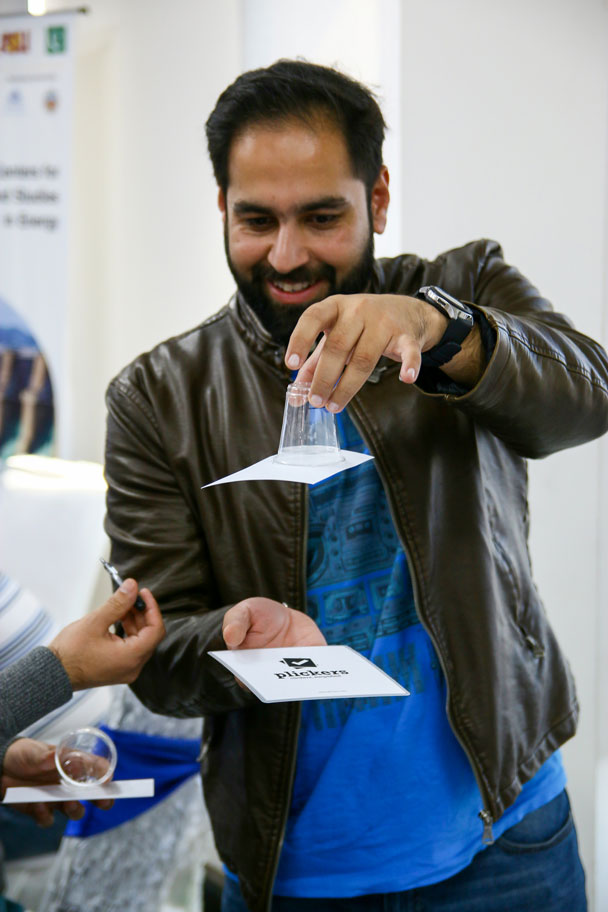
Qamar also welcomed the opportunity to bolster his teaching skills through completion of the Advancing Instructional Methods (AIM) certification program with Professor Peter Rillero. “After completing my Ph.D., I learned about teaching through trial and error,” he confesses, “so I was grateful to have the opportunity for formal teacher training. As a result of my work with Professor Rillero, my teaching methods improved. I learned how to organize lectures, introduce concepts and more actively engage my students in the learning process.”
Back in Pakistan, Qamar says, the change in his classroom was profound. “Before the AIM training, my interactions with students were pretty basic — I asked questions and they answered. But when I began applying the concepts I learned while at ASU, the whole dynamic changed. My students began to participate actively in the learning process. They stopped watching the clock and began to enjoy lectures, challenging me and gaining confidence in their knowledge.” And that confidence has translated into higher post-graduate job placements, Qamar says. “Electrical engineers here are going through tough times in terms of job placement, but my students are getting jobs because they know their field and believe in their abilities.”
A future of endless possibilities
“Through the USPCAS-E program, we’ve given individual students in Pakistan opportunities that they never would have had,” observes ASU Project Director Kiaei. “Working with our partners at NUST and UET Peshawar, we’ve established two centers that offer state-of-the-art, 21st century energy education. And as students graduate and begin their careers, this knowledge will propagate throughout the country as they assume jobs in business and government.” Initiatives within the program have also helped to lay the groundwork to develop hybrid energy sources in Pakistan’s rural areas and decrease the number of regularly scheduled power outages, work that Kiaei is confident will continue.
But the program’s benefits aren’t confined to NUST and UET Peshawar; faculty and administrators at ASU have profited from the experience as well. “The USPCAS-E project gave us the opportunity to execute an international project — we addressed everything from governance to curriculum to policies — and we learned a lot,” says Kiaei. “The success we realized underscores the fact that ASU’s outreach is global.”
The joint research projects conducted by ASU and Pakistan faculty were also productive, Kiaei notes. “The project afforded faculty members many exciting new research opportunities in renewable energy and also gave them a better understanding of the difficulties of implementing new energy systems in poor, and often rural, environments.”
Clark Miller, a professor in the School for the Future of Innovation in Society, has also witnessed the positive impact of the project on all parties. The director of ASU’s Center for Energy and Society and the USPCAS-E program’s joint research project principal investigator, Miller has hosted three Pakistani faculty and 30 students in his lab over the course of the five years, held video conferences with Pakistani faculty every other week throughout the project, and travelled to Pakistan twice. Exposure to new ways of thinking and operating was critical for those at NUST and UET Peshawar, Miller notes. “Discovering that it doesn’t have to be the way it is — that your university can work in totally different ways than you’re used to it working — is both exciting and empowering.”
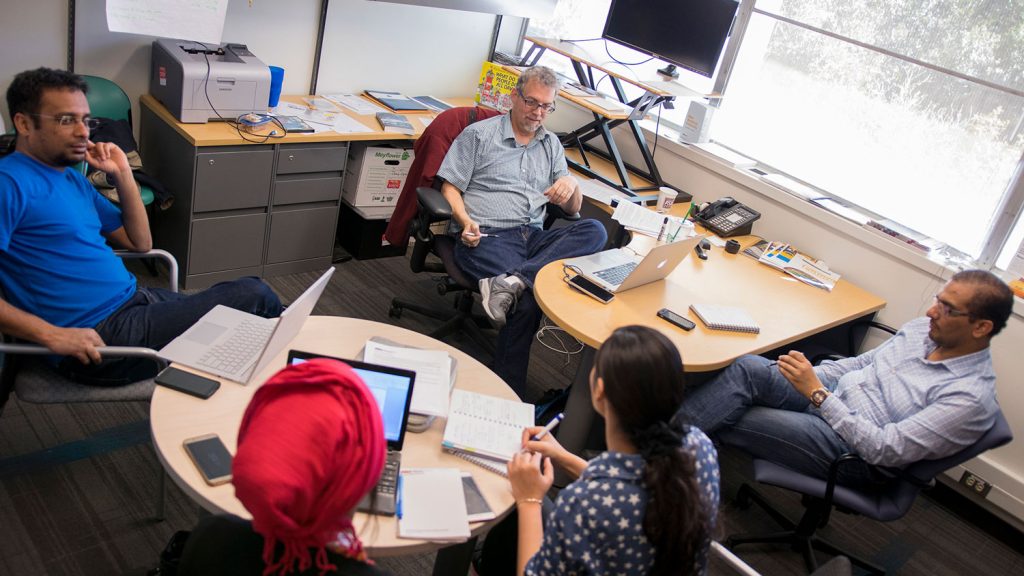
The project was equally enlightening for faculty at ASU, Miller continues. “Having the opportunity to build relationships and create new projects over the course of the past five years has been incredible,” he observes. “For example, in my group at ASU, we’re engaged in trying to understand how energy transitions work and what efforts are being made to create new types of energy systems in places where the current systems are inadequate. As a result, exposure to different systems, new problems and people who know those systems is very valuable. Through USPCAS-E, we’ve built collaborative research networks that will function well into the future.”
The program has allowed structures to be put in place in Pakistan — not just classrooms, buildings and laboratories, but also policies and partnerships that can drive long-term change in the country’s energy systems. “NUST and UET Peshawar are institutions with durability,” Miller observes. “Now they have an integrated perspective on energy, together with the knowledge and tools, that will allow them to advance the energy goals of the nation.”
By Lori L. Ferguson
[1] Source: http://worldpopulationreview.com/countries/pakistan-population/cities/
[2] Source: http://worldpopulationreview.com/countries/pakistan-population/cities/